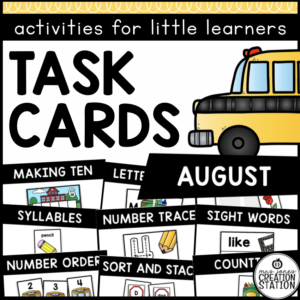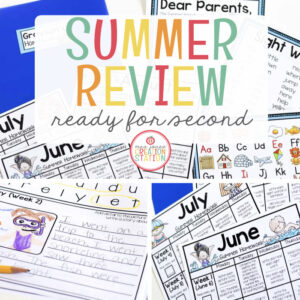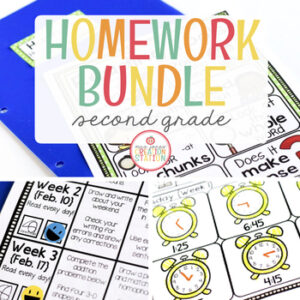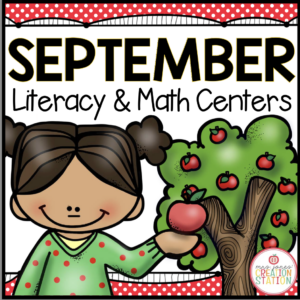Menu
UPDATED FOR SUMMER 2021
This product includes resources for student leaving kindergarten entering first grade in the fall. Each Homework Packet has an Instruction/Calendar Page, corresponding work pages and Reading Log. The activities are aligned with Kindergarten TEKS and CCSS. Skills include: short vowels, decoding words, blends, rhyming, sight words, digraphs, alliterations, writing, editing writing, addition, subtraction, graphing, comparing numbers, fractions, and much more!
____________________________________________________________________
DIRECTIONS
Print these documents double sided. Place the Homework Packets in a folder labeled with the Summer Homework Label. Include the Parent Note Home or make your own using the editable copy. NOTE: My note home informs students that they will receive a prize at the beginning of the upcoming year for completely their Homework Packets.
____________________________________________________________________
THIS RESOURCE INCLUDES
Parent Note Home
Parent Note Home
June Homework Packet
July Homework Packet
August Homework Packet
Summer Homework Folder Label
Homework Helpers: Alphabet, Phonics, Sight Words, Reading Tools
Find the Homework Packets for September through May in the Homework MEGA-BUNDLE: First Grade
How can I see what is new in the MJCS store?
Be the first to know about new discounts, freebies, and new products. You can also subscribe to our newsletter to receive access to resources only available to MJCS subscribers, as well as, special offers and ideas!
How can I get credit for my TpT purchases?
Go to your account button at the top of the page. Under the “Buy” section, click “My Purchases “. Beside each purchase you’ll see a Provide Feedback button. Simply click the button and you will be taken to a page where you can give a quick rating and leave a comment for the product. Each time you give feedback, TpT gives you feedback credits that you use to lower the cost of your future purchases. Please leave detailed feedback for each resource, so we are able to create better resources for teachers and students.
How can I find a certain activity in a large PDF file?
If the resource you purchase has a variety of activities compiled into one PDF find the table of contents and click on the activity title. This should take you to that specific activity in the resource.
What can I do if I have a question about a resource?
If you have any questions regarded a resource before purchasing please email me at mrsjonescreationstation[at]gmail.com. Once you have purchased the resource you may use the “Product Q and A” tab on the product page to ask a question, as well.
How do I know if a resource has been updated?
Go to your account button at the top of the page. Under the “Buy” section, click “My Purchases “. Choose to “sort by: recently updated” to see what resources have been updated since you downloaded them last. You can download any updates from there. If a file has been updated, you will see a notification under the resource that says “Newly Updated – Download for Free!”
This item is a paid product created by Mrs. Jones’ Creation Station, Inc. Copying any part of this product, redistributing, selling or placing it on the internet in any form is strictly forbidden and is a violation of the Digital Millennium Copyright Act (DMCA). Thank you for respecting our work!
YES, YOU CAN…
NO, YOU CAN’T…
Click here for a detailed post with step-by-step directions.
You will need to download fonts specified in the resource and install it on your computer before downloading the editable file.
Install the most recent version of Adobe Reader onto your computer. If you have any problems editing, viewing or printing a file make sure your Adobe Reader is updated.
Now you can download the file to your computer. Once the file has downloaded open in Adobe Reader. You should be able to view the editable fields and the text should match the product description. If you have any problems editing the file, make sure you have followed the directions above and then contact me at mrsjonescreationstation[at]gmail.com




